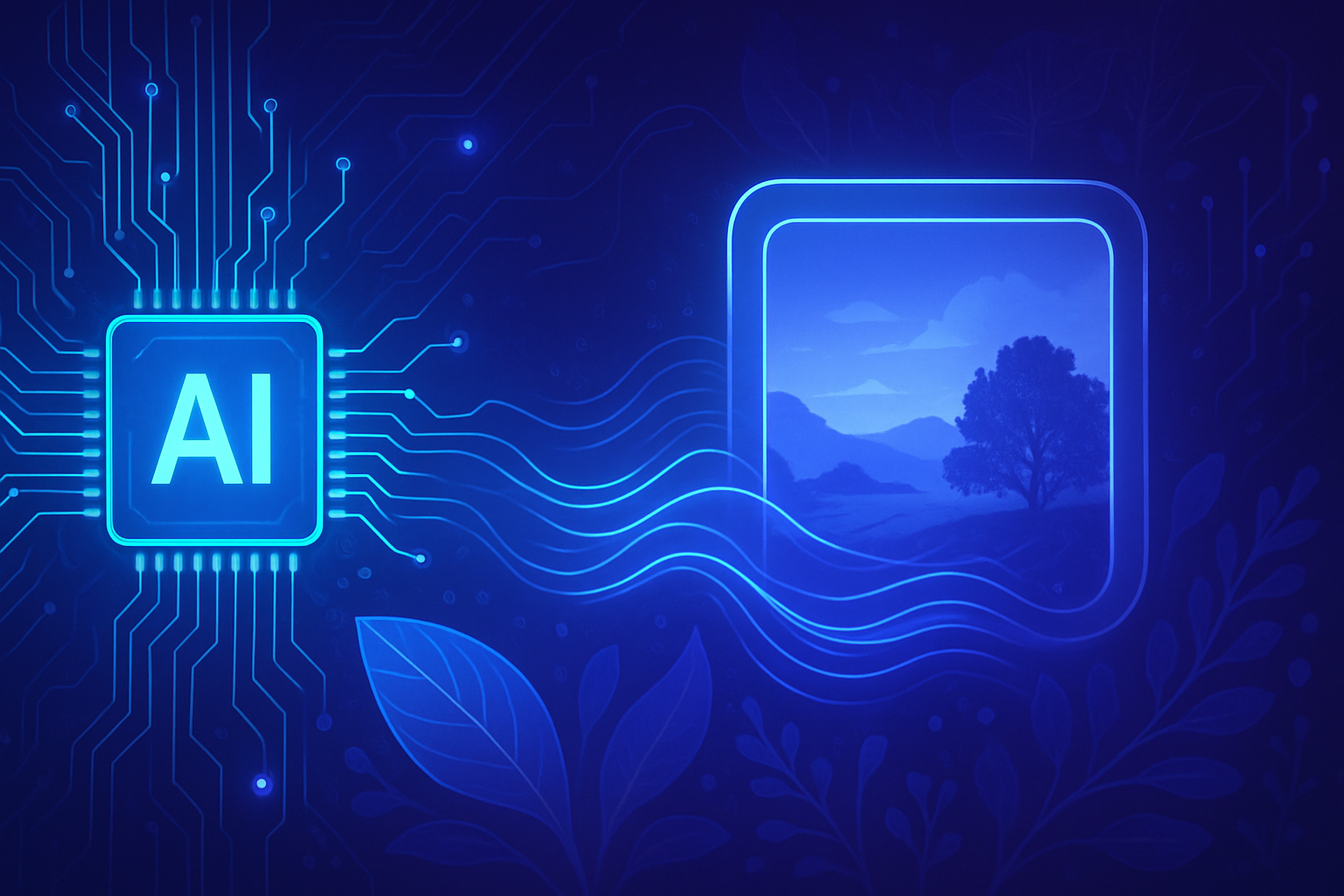The technological revolution of AI leads to an inevitable quest to reduce energy consumption. Current innovation *transforms* the field of image generation, highlighting an efficient model due to its low energy cost. Now more than ever, the need to optimize energy resources is imperative.
An optical-based image generator promises to achieve stunning results while minimizing environmental impact. An essential balance between art and sustainability emerges from this research. This breakthrough offers a viable alternative to energy-intensive methods, thus fostering a future where creativity *consumes almost no energy*.
A new era for generative AI
Researchers at the University of California, Los Angeles have made a significant advancement in the field of generative AI. Using an innovative diffusion-based image generation model, they claim to have designed an image generator that consumes almost no energy. This development represents a promising solution to the increasing computational needs of AI tools.
The image generation process
Traditional image generators rely on complex methods requiring countless computer calculations. The model described by Aydogan Ozcan and his team alleviates this burden through an optics-based approach. Initially, a digital encoder generates a noise structure from a large dataset of images. Transforming this noise into an image requires only a tiny amount of energy.
Next, a liquid crystal display, designated as a spatial light modulator (SLM), prints this pattern onto a laser beam. The laser then passes through a second SLM that decodes this information to create the final image. Thus, the technique relies on light to perform the most resource-demanding processes.
Remarkable energy performance
This model achieves performance comparable to that of conventional image generators while using minimal energy. Shiqi Chen, the lead author of the study, emphasizes that these optical generative models seek to synthesize a multitude of images with nearly zero computing power. This energy efficiency is critical, especially in a context where demand for generative capabilities is increasing exponentially.
Potential applications across various fields
The practical implications of this technological advancement are vast. Energy-efficient image generators can easily integrate into various sectors, from virtual reality to the design of electronic devices like smartphones. The system’s ability to rapidly produce images opens up perspectives in areas requiring quick and effective visual customization.
Moreover, this technology could significantly reduce the carbon footprint of AI-generated content creation. In an increasingly environmentally conscious world, such innovation could play a central role in the sustainable development of AI.
Current status and future prospects
Currently, this method is being tested with various images to evaluate its capabilities. Researchers have used images of animals, celebrities, and iconic paintings, such as the works of Vincent Van Gogh. The continuous evaluation of this technology could unveil new opportunities for generative AI.
Investment in generative AI is on the rise, as indicated by recent initiatives from Google Deepmind and major players like Meta, demonstrating growing interest in this field. Research in generative AI continues to progress, promising unexpected discoveries in the future.
Frequently asked questions about the breakthrough of AI generating images with minimal energy consumption
What is the operating principle of energy-efficient AI-based image generators?
These image generators use a process called diffusion, which begins by creating a static pattern using a digital encoder and then employs a spatial modulator to imprint this pattern onto a laser beam, generating images with almost zero energy consumption.
How does this image-generating technology differ from traditional AI models?
Unlike traditional AI models requiring millions of computer calculations, this technology relies on light to perform heavy operations, significantly reducing the power required.
What are the potential applications of this AI image-generating technology?
It could be used in various fields, including creating images and videos for virtual and augmented reality, as well as for compact devices like smartphones and smart glasses.
Is this technology capable of producing high-quality images?
Yes, experimental results have shown that the quality of generated images is comparable to that of conventional image generators while consuming much less energy.
What is the significance of this technological advancement for the environment?
This innovation has the potential to significantly reduce the carbon footprint of AI-generated content, which is crucial in the context of growing concerns about climate change and energy sustainability.
How might research in this field evolve in the future?
Researchers may continue to refine and improve the technology, seeking to integrate it into more applications while pursuing ever more efficient energy and resource solutions.
Who conducted the research behind this technological breakthrough?
The research was conducted by Aydogan Ozcan and his team at the University of California, Los Angeles, and their findings were published in the journal Nature.
Are there any limitations to this AI technology?
Although promising, the technology may face challenges such as the complexity of images to be generated or limitations in certain application contexts, but ongoing research aims to overcome these obstacles.






